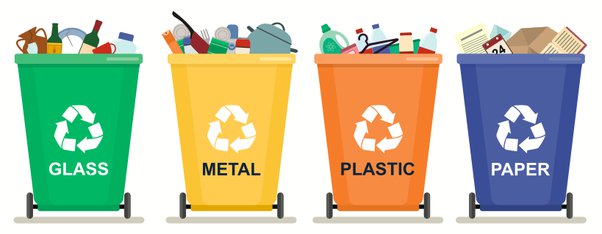Techniques For The Disposal Of Waste
There is a wide variety of approaches and procedures that can be used to control garbage. It is possible to construct a waste management system which is tailored to a company by combining a few of these techniques or rearranging their order.
The management practices of today are focused on minimizing their impact on the environment. Reducing, reusing, and recycling waste are three additional methods that can be utilized in waste management.
Recycling, which is also known as physical reprocessing, is the best method for getting rid of inorganic trash such as plastic, glass, and metals. Recycling is often referred to as “recycling.”
Composting is a more effective method for trash disposal than recycling since it transforms organic waste into nutrient-dense fertiliser. Organic waste includes things like paper and food, both of which can be recycled.
The conversion of non-recyclable trash into heat, power, or fuel through the use of renewable energy sources including anaerobic digestion & plasma gasification is referred to as waste-to-energy, or WtE for small.
The conversion of animal manure & human waste into methane-rich biogas can be accomplished through a process known as anaerobic digestion. In plasma gasification, hazardous waste is converted into syngas in a vessel that is filled with plasma and then subjected to high temperatures & low oxygen levels during the method.
Bioremediation, which is the treatment of contaminants, poisons, and pollutants by the use of micro-organisms, is yet another method that can be utilized for the disposal of hazardous waste.
What is the purpose of waste disposal?

The United States of America is solely responsible for the generation of a staggering 277 million tonnes of rubbish annually (annually).
In light of the fact that this figure is significantly higher than that of any other nation in the world, the government of the United States and various environmental associations have come up with a variety of strategies to address this pressing problem.
However, what exactly is meant by the term “waste management”? To put it in the simplest term possible, waste management is the process of collecting, transporting, and disposing of waste products such as garbage, sewage, & other types of waste.
Treating both solid waste and liquid waste is an integral part of the process of waste management. During the process, it also provides a variety of options for recycling materials that aren’t considered to be garbage. These options are offered as part of the treatment.
Reusing rubbish as the valuable resource is the crux of the entire concept, and in light of the state of the environment today, this practise is more important than ever for both private residences and commercial enterprises.
The Numerous Advantages Of Proper Waste Management
The processing and administration of garbage can result in a variety of positive outcomes. In the following paragraphs, we will provide a more in-depth look at them.
Better Environment
The fact that properly managing waste will eventually result in a cleaner and more pleasant atmosphere is most likely the advantage that stands out the most.
People who use waste disposal units are less likely to contract diseases, which is another way in which these machines contribute to people’s overall well-being. The best part is that all of this takes place while anything that isn’t necessary is properly disposed of in a way that is both correct and sanitary.
In order to speed up the process of garbage disposal, numerous waste disposal units must be constructed in cities that fall into the tier-1 and tier-2 categories. In the long run, this will also be helpful in the implementation of amazing safety measures.
Conserves Energy
Recycling is one of the most important components of waste management, and it also plays a role in the conservation of energy throughout time. The act of recycling paper is one of the best examples of this benefit in action. It helps save resources and reduces waste.
It’s likely common knowledge that the production of paper requires the felling of thousands of trees. It is possible to drastically reduce the amount of tree harvesting that is required when old paper is recycled and turned into new paper. This not only helps conserve energy but also reduces the carbon footprints that are left behind.

